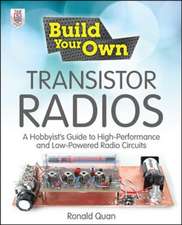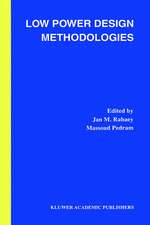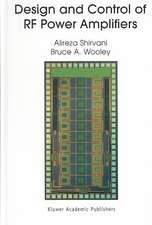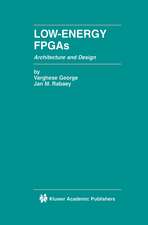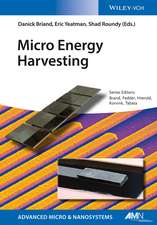Energy Scavenging for Wireless Sensor Networks: with Special Focus on Vibrations
Autor Shad Roundy, Paul Kenneth Wright, Jan M. Rabaeyen Limba Engleză Paperback – 5 noi 2012
| Toate formatele și edițiile | Preț | Express |
|---|---|---|
| Paperback (1) | 1213.79 lei 6-8 săpt. | |
| Springer Us – 5 noi 2012 | 1213.79 lei 6-8 săpt. | |
| Hardback (1) | 1220.45 lei 6-8 săpt. | |
| Springer Us – 30 noi 2003 | 1220.45 lei 6-8 săpt. |
Preț: 1213.79 lei
Preț vechi: 1480.23 lei
-18% Nou
232.26€ • 239.61$ • 193.82£
Carte tipărită la comandă
Livrare economică 26 martie-09 aprilie
Specificații
ISBN-10: 1461351006
Pagini: 232
Ilustrații: XV, 212 p.
Dimensiuni: 155 x 235 x 12 mm
Greutate: 0.33 kg
Ediția:2004
Editura: Springer Us
Colecția Springer
Locul publicării:New York, NY, United States
Public țintă
ResearchCuprins
Descriere
The vast reduction in size and power consumption of CMOS circuitry has led to a large research effort based around the vision of wireless sensor networks. The proposed networks will be comprised of thousands of small wireless nodes that operate in a multi-hop fashion, replacing long transmission distances with many low power, low cost wireless devices. The result will be the creation of an intelligent environment responding to its inhabitants and ambient conditions.
Wireless devices currently being designed and built for use in such environments typically run on batteries. However, as the networks increase in number and the devices decrease in size, the replacement of depleted batteries will not be practical. The cost of replacing batteries in a few devices that make up a small network about once per year is modest.
However, the cost of replacing thousands of devices in a single building annually, some of which are in areas difficult to access, is simply not practical. Another approach would be to use a battery that is large enough to last the entire lifetime of the wireless sensor device. However, a battery large enough to last the lifetime of the device would dominate the overall system size and cost, and thus is not very attractive.
Alternative methods of powering the devices that will make up the wireless networks are desperately needed.

